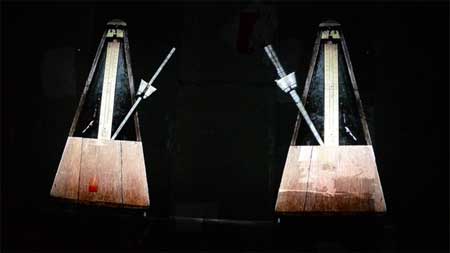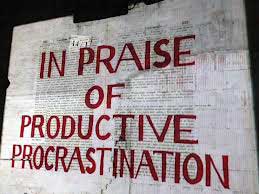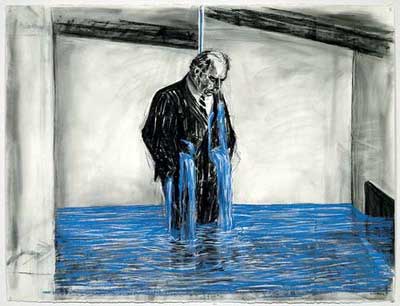Gallery Installation (2012)
by William Kentridge
Music and soundscape by William Miller
Video Editing by Catherine Meyburgh
Dramaturg: Peter Galison
February 5 – May 4, 2014
Institute of Contemporary Art, Boston, MA

© William Kentridge
I have been to see – or rather, experience – Kentridge’s wonderful installation a few times over the past months and strongly recommend getting to it before it leaves the ICA in early May.
The piece, generally, is an indictment of the regulation of time. A large mechanical lung fills the center of the gallery, a tribute to a Parisian device which, at the end of the 19th century, was meant, through the regulated pumping of air throughout the city, to coordinate clocks.
The rest of the piece – films on multiple surrounding screens with associated soundtrack that run about 30 minutes – is meant to call into question everything that kind of centralized regulation represents, and it does so brilliantly and exuberantly. It is totally worthwhile to sit in one of the chairs and stay through the duration of the piece. What appears initially as a kind of haphazard melange actually has a kind of coherent narrative.
The general theme of the anti-colonialist rebellion against the standardization of time provides a core to the collage-like narrative throughout. That Kentridge is South African – that he brings in the issue of anticolonialism while raising tribal music and African dancing into the core of his film – adds a sense of where he is coming from and what energies fuel his iconoclastic vision.
Apparently, in 1894, French anarchists tried to blow up the Royal Observatory in Greenwich, England, which, in 1884, had been set up by the British as the temporal center of the world. That event also forms part of the cinematic imagery in the film.

© William Kentridge
Here are a few notes to give the flavor of the piece:
It starts with metronomes and then snare drums, then a trombone comes in, and African chanting, lots of syncopation, many metronomes all at once, going crazy. Then it all devolves into a unified band: trombones, various percussive sounds and strings intermingle. We see William Kentridge’s image appear walking over chairs with vocalized time marks. Then a black woman walks with Kentridge, with variations on multiple screens, one with an animated collage. In one of them he carries her. Then a black couple in a painted room appear, an accordion in the background. A whole group of people, all black, are then dancing in the room. Statements like How do we know we are in time? and Here I am, or In praise of bad clocks appear at various points. An account of the Parisian bellow regulators for clocks emerges, and then there is a representation of Einstein’s twins who travel in space and age at different rates. A dictionary appears on one screen, a cosmic address on the other. In praise of productive procrastination comes up, and then voices, sounds of tubas, trombones, lots more dancing of the group of black people in the painted room. One of them wears a world suit. Tribal sounds emerge. Finally a dancing black couple, the man in a world suit, and the final title Finish.
I’ve seen it a few times by now. The whole thing is quite exhilarating, and I heard numbers of people emerging from the installation say things like I don’t usually like installations, but this one is really good.

(Felix Teitlebaum character)
The Museum of Modern Art, New York
© 2010 William Kentridge courtesy MoMA
There are also multiple prints by Kentridge outside the installation itself, some of which are quite moving and suggestive. Kentridge has some indivudal characters who show up repeatedly in his works – representing himself, presumably, and his wife, among others – and there is something about their rendered vulnerability that is quite palpable.
Spectrometre (2000) is one of these, a digital print that looks like a drawing on the pages of a dictionary upon which the word spectrometre appears. It consists principally of two middle-aged nudes – he wears a dark hat and holds his hands behind him. She wears glasses, has short hair and carries a spear. They stand calf deep in water. Apparently, the man resembles Felix Teitlebaum, one of Kentridge’s stock characters since the 1980s. As well, there appear to be similarities to images utilized in The Refusal of Time.
– BADMan
Leave a Reply